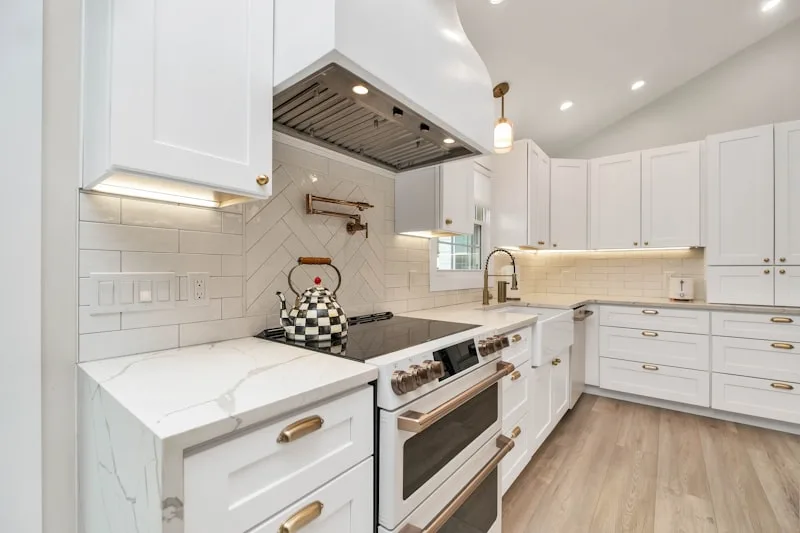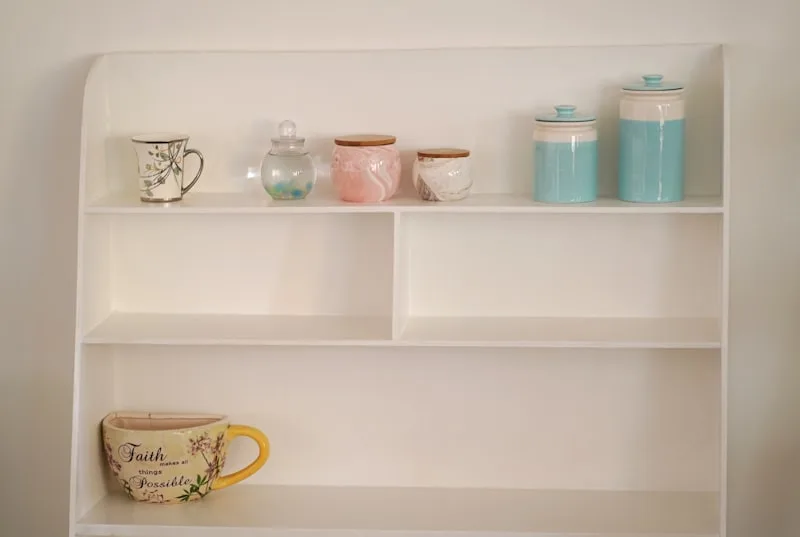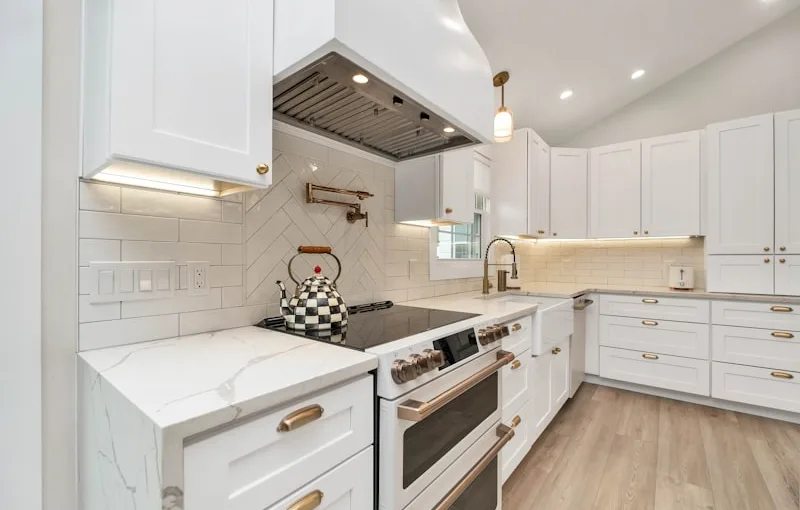Deglosser is a magical potion in the world of DIY cleaning. It’s designed to strip away that glossy finish, but here’s the kicker: it’s also pretty good at cutting through grease. Think of it as a superhero for your cabinets, swooping in to save the day. When you apply deglosser, it penetrates the grease, breaking it down and making it easier to wipe away. It’s like using a powerful detergent that doesn’t just mask the problem but tackles it head-on.
Now, you might be asking, “Is it safe for my cabinets?” Generally, yes! Most deglossers are safe for wood surfaces, but it’s always a good idea to do a patch test first. Just like you wouldn’t dive into a pool without checking the water temperature, you want to ensure your cabinets won’t suffer any damage.
Using deglosser is as simple as applying it with a cloth, letting it sit for a few minutes, and then wiping it off. It’s almost like giving your cabinets a refreshing spa day! So, if you’re tired of looking at those greasy fingerprints and splatters, deglosser might just be the answer you’ve been searching for. It’s effective, easy to use, and can breathe new life into your kitchen. Who wouldn’t want that?
Deglosser vs. Grease: Can This Household Hero Restore Your Kitchen Cabinets?

Deglosser is like that magic eraser you didn’t know you needed. It’s designed to remove the glossy finish on your cabinets, prepping them for a fresh coat of paint or stain. Think of it as a gentle exfoliation for your wood. Just like your skin feels rejuvenated after a good scrub, your cabinets will be ready to shine again. Plus, it’s super easy to use—just apply it with a cloth, and watch the old finish disappear like a bad memory.
On the flip side, grease is the villain in this story. Over time, cooking splatters and spills can leave your cabinets looking like they’ve been through a food fight. Grease can cling on tighter than a toddler to their favorite toy, making it a real challenge to clean. But fear not! A good degreaser can cut through that sticky residue, leaving your cabinets clean and ready for action.
So, can deglosser and grease work together to restore your kitchen cabinets? Absolutely! Start with the degreaser to tackle the grime, then follow up with deglosser to prepare the surface for a makeover. It’s like a dynamic duo, working hand in hand to bring your cabinets back to life. Imagine walking into your kitchen and seeing those cabinets gleaming like new—now that’s a sight worth celebrating!
The Truth About Deglosser: Is It the Ultimate Solution for Greasy Cabinets?
Deglossers are designed to strip away that grimy layer, making it easier to paint or refinish your cabinets. Think of it as a deep-cleaning facial for your furniture. But here’s the catch: while deglossers can work wonders, they’re not a one-size-fits-all solution. If your cabinets are coated in years of grease, a simple wipe-down with a deglosser might not cut it. You might need to roll up your sleeves and scrub a bit first.
Now, let’s talk about the application. Using a deglosser is like applying a magic eraser to your cabinets. You’ll want to use it with a clean cloth, applying it in a circular motion. But be careful! Too much pressure can lead to uneven results, and nobody wants that. It’s all about finding that sweet spot—just enough to lift the grime without damaging the surface.
Say Goodbye to Grease: How Effective is Deglosser on Kitchen Cabinets?
Imagine your cabinets are like a canvas, and grease is that stubborn paint that just won’t budge. A deglosser works like magic, breaking down that greasy layer without the need for heavy sanding. It’s like giving your cabinets a refreshing spa day! You simply apply it with a cloth, and watch as it lifts away the grime, leaving a clean surface ready for a fresh coat of paint or stain.

Now, you might be wondering, “Is it really that easy?” Absolutely! Think of deglossing as a gentle exfoliation for your cabinets. Just as you wouldn’t want to slap on moisturizer without first cleansing your face, you shouldn’t paint over greasy cabinets. Deglosser ensures that the new finish adheres properly, preventing peeling and chipping down the line.
But here’s the kicker: not all deglossers are created equal. Some are more effective than others, so it’s worth doing a little research before you dive in. Look for products that are specifically designed for kitchen use, as they tend to tackle grease more effectively.
Deglosser Dilemma: Will It Really Banish Grease from Your Cabinets?
Deglosser is like a superhero for your cabinets, swooping in to save the day. It’s designed to strip away that stubborn grease and grime without the need for heavy sanding. Imagine trying to scrub a pan that’s seen better days; it’s a workout you didn’t sign up for! With deglosser, you can skip the elbow grease and let the solution do the heavy lifting. Just apply it, wipe it down, and voilà—your cabinets are looking fresh again.
But here’s the catch: not all deglossers are created equal. Some might leave you feeling like you’ve just been sold a one-way ticket to disappointment city. You need to choose wisely. Look for products that specifically mention grease removal. It’s like picking the right tool for a job; you wouldn’t use a butter knife to cut a steak, right?
And let’s not forget about the prep work. Before you dive in, make sure to clear off your cabinets and give them a good dusting. Think of it as setting the stage for a grand performance. You wouldn’t want a messy backdrop when you’re trying to showcase your kitchen’s best features!
So, will deglosser really banish grease from your cabinets? With the right product and a little bit of effort, you might just find that it’s the answer to your greasy cabinet prayers.
Frequently Asked Questions
Are There Alternatives to Deglosser for Grease Removal?
There are several effective alternatives to deglossers for removing grease. Common options include vinegar, baking soda, dish soap, and commercial degreasers. These substances can break down grease and grime, making surfaces clean and ready for painting or refinishing. Always test a small area first to ensure compatibility with the surface.
What is Deglosser and How Does It Work on Grease?
Deglosser is a chemical solution designed to prepare surfaces for painting by removing grease, grime, and old finishes. It works by breaking down the bonds of oily substances, allowing for easier cleaning and better adhesion of new paint. To use, apply the deglosser to the greasy area, let it sit for a few minutes, and then wipe it away with a clean cloth, ensuring the surface is ready for the next step in your project.
Can Deglosser Effectively Remove Grease from Kitchen Cabinets?
Deglosser is a solvent designed to prepare surfaces for painting by removing grease, grime, and old finishes. It can effectively clean kitchen cabinets, making them ready for refinishing. However, for heavy grease buildup, a thorough cleaning with a degreaser may be necessary before using deglosser for optimal results.
Will Deglosser Damage My Kitchen Cabinet Finish?
Using a deglosser can effectively prepare your kitchen cabinets for refinishing by removing the glossy finish without sanding. However, it may also cause damage if not used properly, potentially leading to discoloration or uneven surfaces. Always test on a small, inconspicuous area first to ensure compatibility with your cabinet’s finish.
How to Use Deglosser for Cleaning Greasy Cabinets?
To clean greasy cabinets using a deglosser, first ensure the area is well-ventilated. Apply the deglosser to a clean cloth or sponge and gently rub it onto the greasy surfaces in a circular motion. Allow it to sit for a few minutes to break down the grease. Wipe off the residue with a clean, damp cloth. For tough spots, repeat the process as needed. Always test on a small, inconspicuous area first to ensure compatibility with the cabinet finish.
